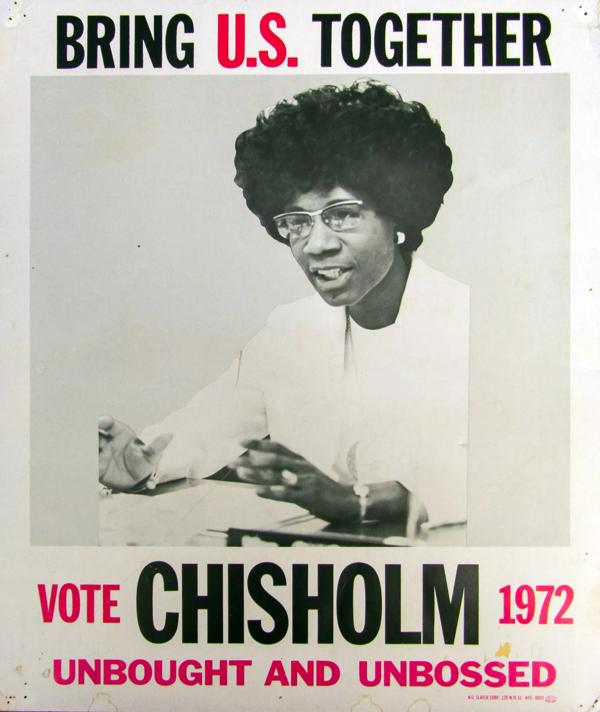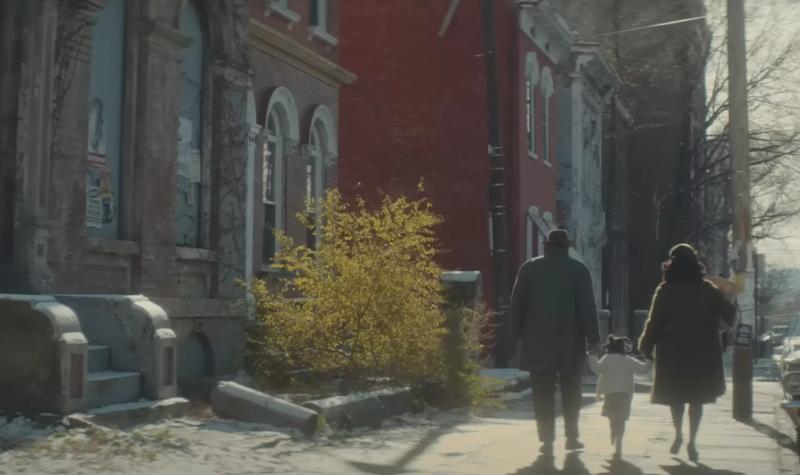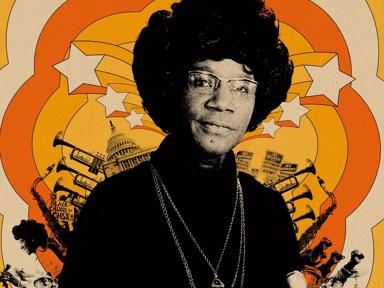Who is Shirley Chisholm?

In 1972 a woman who had already made political waves, sought to make even greater ones, by announcing that she was to run for US President.
Shirley Chisholm is a name which ought to be much more widely known. Defiant in the face of discrimination of both sex and race in 1968 she became the first Black woman elected to the US Congress. And four years later put herself forward as the first Black woman from one of the two main US political parties to be a candidate for President.
Here’s a little more about the remarkable story of thIS fearless social campaigner and how and why she earned the nickname ‘Fighting Shirley Chisholm’.
She was born in New York, but always considered herself a Barbadian American
Though born in Brooklyn in 1924, Shirley Anita St. Hill always considered herself a Barbadian American. Her mother, Ruby, was from Barbados, and her father, Charles, had grown up on the island, as Shirley would also do. With both her parents working, five-year-old Shirley and two of her sisters were sent to live on Barbados with their maternal grandmother and aunt. She returned to New York in 1934, armed with a West Indian accent which she would speak with throughout her life, and an education she credited as being key to her career.
Her introduction to politics began at home…
Chisholm’s earliest introduction to politics is likely to have come at home. Her father, a factory labourer, was a dedicated trade unionist and both he and Chisholm’s mother were supporters of the Jamaican political activist, Marcus Garvey.
…but was revived at College
Whilst a student at Brooklyn College – from which she would graduate with distinction – Chisholm won prizes for her debating skills, and as a member of the Harriet Tubman Society advocated for inclusion, greater focus on Black history and the involvement of more women in student government. Whilst at Brooklyn she attended a talk by New York political leader Stanley Steingut, who told the Black association Chisholm was part of, that they could only advance with the guidance of White people. This assertion, that Black people cannot lead, angered Chisholm, who vowed to prove him wrong.
Her political career began in earnest at the age of 29
After leaving college Chisholm worked in early years education, eventually becoming an educational consultant in New York City's Bureau of Child Welfare. But politics was never far away. In 1953 she joined Wesley ‘Mac’ Holder's effort to elect Lewis Flagg Jr. as the first Black judge in Brooklyn and, via several other local groups, eventually found her way to membership of the newly created Unity Democratic Club. As part of the UDC she campaigned for Thomas R Jones, who became Brooklyn’s second Black assemblyman in 1962. And then two years later, when Jones accepted a judicial appointment, Chisholm decided to run for his seat.

She became only the second Black woman in New York State Legislatures
Chisholm faced resistance in her bid for a place in the New York State Assembly, but this was often due more to her sex than her race. The UDC were hesitant to support a female candidate, and she also faced opposition door-to-door, later recalling how an older African-American voter asked her ‘Young woman, what are you doing out here in this cold? Did you get your husband's breakfast this morning? Did you straighten up your house? What are you doing running for office? This is something for men’. However her campaign proved greatly successful, and she won the Bedford-Stuyvesant seat by a landslide.
She then became first Black woman in Congress
In 1968, under the slogan ‘Unbought and unbossed’, Chisholm ran for Congress, seeking to represent New York’s 12th congressional district in the House of Representatives. After defeating State Senator William S Thompson and labour official Dollie Robertson in the Democratic Primary, Chisholm faced off against the well-known Liberal Party candidate James Farmer, a leading presence in the civil rights movement of the 1960s. In something of an upset that helped cement her nickname of ‘Fighting Shirley Chisholm’, she defeated Farmer on a two-to-one margin to become the first Black woman elected to Congress.
Once in Congress she continued to overcome challenges
In Congress Chisholm was assigned to the House Agriculture Committee, a role hardly in-keeping with her responsibilities to her inner-city constituents. But Chisholm sought to make the most of the appointment, using it as a means to help poorer Americans; she worked to expand the country’s food stamp programme, and played a key role in the creation of the Special Supplemental Nutrition Program for Women, Infants and Children. After learning she was next set to be placed on the Rural Development and Forestry Subcommittee, Chisholm spoke out earning a reassignment to the Veterans’ Affairs Committee, with Chisholm acknowledging the greater relevance of this post by stating ‘there are a lot more veterans in my district than there are trees’.
She became the first Black woman to run for President
On 25 January, 1972, in the modest setting of Brooklyn’s Concord Baptist Church, Chisholm announced her intention to run for US President. Chisholm told reporters ‘I am not the candidate of Black America, although I am Black and proud. I am not the candidate of the women’s movement of this country, although I am a woman and equally proud of that… I am the candidate of the people of America… and my presence before you symbolises a new era in American political history’.

Though her candidacy she faced a great amount of opposition and discrimination
Chisholm’s campaign saw her fighting more than just her fellow Democratic running mates. She received three confirmed death threats and much of the Democratic political establishment ignored her, viewing her candidacy as merely a symbolic gesture rather than a genuine campaign. She was blocked from participating in televised primary debates, and after taking legal action, was permitted to make just one speech. She also received little support from Black male colleagues, later stating of them that ‘they think I am trying to take power from them. The Black man must step forward, but that doesn't mean the black woman must step back’. Chisholm would also highlight the sexism she faced in her run for office; ‘When I ran for the Congress, when I ran for president, I met more discrimination as a woman than for being Black. Men are men.’
Ultimately the odds were just stacked too firmly against her Presidential bid
In addition to the discrimination and opposition, Chisholm also had the least financial backing of the Democratic candidates. Her campaign spending amounted to just $300,000. But despite this, she performed admirably, placing fourth of the 15 Democratic candidates in the Democratic National Convention delegate vote, and seventh in the primaries. She also made significant strides in bringing together women of all races, from across a great number liberal groups. As Chisholm herself said, she ran for office ‘in spite of hopeless odds... to demonstrate the sheer will and refusal to accept the status quo’.
Her political activism didn’t end with her bid to become President
Chisholm remained in Congress for a further decade, during which time she worked on improving opportunities for inner-city residents and land rights for Native Americans; fought discrimination against women; and advocated the Equal Rights Amendment. After stepping down from Congress in 1983 she returned to education, as chair at Mount Holyoke College, but didn’t end her association with progressive politics. She campaigned for Jesse Jackson during his 1984 and 1988 presidential campaigns and in 1990, along with 15 other Black women and men, established African American Women for Reproductive Freedom.

Chisholm’s remarkable legacy continues to outlive her
After a year-long battle with ill health, Chisholm died at home on New Year’s Day, 2005. In the years since her death, Chisholm’s impact on US politics has been more widely appreciated. In popular culture she has been the subject of several documentaries and biographies, with her life also documented in the new soul and funk musical, Chisholm for President!. And in politics, a number of contemporary US politicians, including Barbara Lee and Vice President Kamala Harris, have cited Chisholm as a major influence on them. As too has President Barack Obama, who in 2015 posthumously awarded Chisholm the Presidential Medal of Freedom.

Join us as musicians play songs from the new soul and funk musical inspired by Shirley Chisholm in our Purcell Room on 13 April.